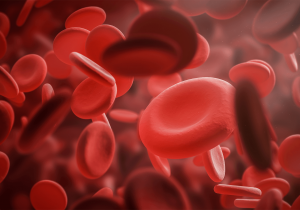
September is Blood Cancer Awareness Month
Being diagnosed with blood cancer can make your blood run cold. While having any kind of cancer can be scary, blood cancer is frightening because the disease doesn’t discriminate, and its impact is misunderstood. Blood cancer is a case of blood cells gone rouge. See, your blood consists of several types of cells, including red blood cells that carry oxygen, white blood cells that fight infections, and platelets that help blood clot. When normal blood cell development is disrupted by the growth of abnormal blood cells that don’t function properly, blood cancer is the result.
September is a red-letter month for the disease because it’s a time when advocates raise awareness about blood cancer by wearing red ribbons and sharing the urgent need for support. Consider dedicating some time this September to learning about the prevalence of blood cancer, the different types of the illness, and the main blood cancer symptoms. Then, discover various blood cancer treatment options and ways to reduce your risk. And, be sure to share this information and support ongoing research to show that caring is in your blood.
The circulation of blood cancer
According to the Leukemia & Lymphoma Society, every three minutes, someone is diagnosed with blood cancer in the United States and more than 1.3 million Americans are either living with the disease or are currently in remission. Since so few people understand its effects, blood cancer is the third leading cause of cancer deaths in the country.
Types of blood cancer
Just as there is more than one blood type, there is more than one kind of blood cancer. In fact, blood cancers are actually a family of five diseases. These include some that you have heard of before, such as leukemia and lymphoma, along with less common kinds like myelodysplastic syndromes. Yet, the one thing they have in common is that they all start in your bone marrow, which is the soft and spongy tissue inside of your bones where your blood cells and platelets are produced. These five main kinds of blood cancers include:
- Leukemia – The most common cancer in children and teenagers, leukemia occurs when the white blood cells that protect you from infections start growing abnormally and crowding out healthy blood cells.
- Lymphoma – Developing in the lymphatic system, lymphomas affect cells known as lymphocytes, which are a kind of white blood cell that your body uses to fight infections. These two main types are non-Hodgkin’s lymphoma and Hodgkin’s lymphoma. The primary differences between the two are the presence of the Reed-Sternberg cell in Hodgkin’s lymphoma and the different treatment options. While anyone can develop lymphoma at any age, more than half of people diagnosed are over age 65.
- Multiple myeloma – This is a cancer of the plasma cells, which are a type of white blood cell that produces antibodies to help protect your body from infections. These tend to occur later in life, with the average age of diagnosis being 68 years old.
- Myelodysplastic syndromes – This is a group of disorders that occur when your bone marrow produces blood cells that don’t function properly. As these unhealthy cells accumulate, they take up more room in the bone marrow, which leaves less space for the healthy blood cells to grow.
- Myeloproliferative disorders – These are the result of your bone marrow producing too many blood cells. The excess may be any combination of red blood cells, white blood cells, and platelets.
Vital signs and symptoms
While there are different types of blood cancers, they tend to share many of the same symptoms. Some people don’t notice symptoms until the disease has advanced, while others may mistake signs for a cold or case of the flu. If you experience any of these blood cancer symptoms, contact your SignatureMD-affiliated doctor immediately as early diagnosis can lead to more effective blood cancer treatment. The most common blood cancer symptoms include:
- Persistent fatigue and weakness
- Fever or chills
- Loss of appetite
- Nausea
- Sudden weight loss
- Stomach pain
- Pain in your bones and joints
- Night sweats
- Frequent infections
- An unexplainable skin rash
Draw on these tips to reduce your risk
While there’s no clear way to completely prevent blood cancers, it’s clear that taking some simple steps may help you lower your risk. It all comes down to decreasing the behaviors that can increase your overall risk. The top suggestions for prevention include:
- Quit smoking and all using forms of tobacco.
- Eat a healthy diet.
- Get regular exercise.
- Maintain a healthy weight.
- Avoid exposure to strong chemicals, such as benzene and pesticides.
Count on these blood cancer treatment options
Today, advances in blood cancer treatment are helping many survive and thrive. There are different types of treatment based on the type of blood cancer, the speed of its progression, and whether the cancer has spread. The most common treatments include chemotherapy, radiation, immunotherapy, and stem cell transplants. While the ultimate goal of treatment is curing the disease, when this isn’t possible, many of these treatments can help reduce symptoms and put blood cancer into remission for years.
During Blood Cancer Awareness Month, spread the word about blood cancers to help raise awareness, funds, and the spirits of families fighting these illnesses because your support is the lifeblood for one day finding a cure.
Sources:
- https://www.lls.org/article/september-blood-cancer-awareness-month
- https://hillman.upmc.com/cancer-care/blood/symptoms-diagnosis
- https://www.healthline.com/health/leukemia/leukemia-awareness-month
About SignatureMD
SignatureMD is one of the nation’s largest firms providing initial conversion and ongoing support services to concierge medicine physicians. SignatureMD currently partners with over 200 affiliated primary care physicians and specialists across 35 states, and its network is rapidly expanding.